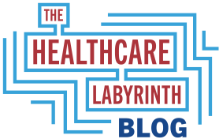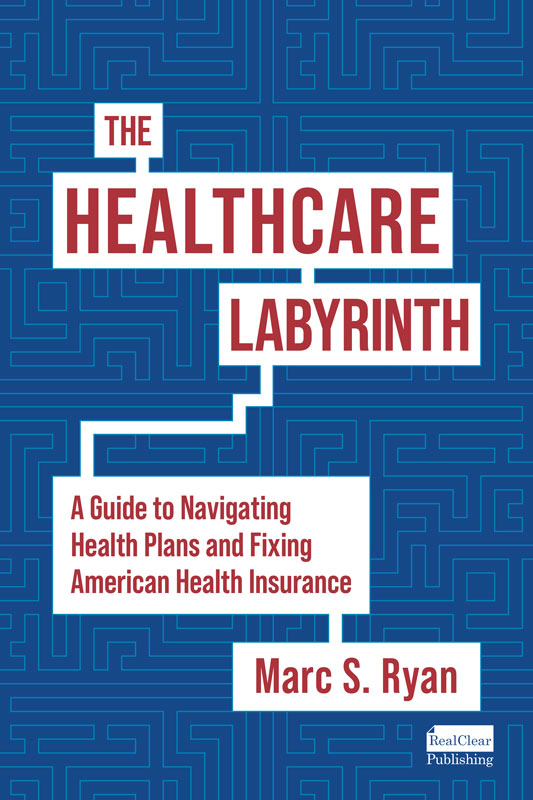Washington continues with talk of a second budget reconciliation bill coming sometime later this year. The impetus comes from a few things. There is pressure within the two Republican caucuses to seriously deal with rising deficits and enact deeper spending cuts. The One Big Beautiful Bill Act (OBBBA) cut healthcare by over $1 trillion. But due to new tax cuts and extensions, the deficit over the ten-year budget horizon goes up by $3.4 trillion, more if you include interest costs. The debt limit was actually increased by $5 trillion in the bill. And the U.S. government has just hit total debt of $37 trillion.
The other issue is a political one. Conservative members of the GOP caucuses say they got explicit promises that they will have a shot at passing deeper healthcare cuts later this year. They indicate the commitments came from the president and their leaders in each chamber and these promises directly led to their supporting passage of the OBBBA. One big area prominent conservatives wanted to change was the 90% reimbursement in Medicaid for expansion populations.
A refresher on OBBBA healthcare cuts
The healthcare cuts in the OBBBA were plentiful. The over $1 trillion in reductions focused primarily on Medicaid, with the biggest changes being:
- Imposition of work requirements.
- Limitations and the phasedown of allowable provider taxes for state match, including concomitant reductions in state directed payments.
- More frequent eligibility checks and other restrictions on enrollment.
A series of changes were made to the Exchanges, focusing on tightening enrollment requirements and other enrollment restrictions. A companion rule passed by the Trump administration also restricts enrollment periods and makes other changes. And the enhanced premium subsidies sunset at the end of the year as no extension was passed.
All in all, between the Medicaid and Exchange cuts, the Exchange enrollment rule, and the premium subsidy enhancement expiration, over 15 million are expected to lose healthcare coverage.
We also could see major Medicare cuts due to underlying PAYGO sequestration rules. This law triggers mandatory spending cuts if the budget deficit is projected to increase in a given federal fiscal year (FFY). Mandatory Medicare reductions are capped at 4% of expected expenditures. Because the OBBBA increases the deficit by $3.7 trillion over a 10-year budget horizon, mandatory cuts are expected as early as FFY 2026. The FFY 2026 Medicare cut could be $45 billion, with cuts totaling over $500 billion in the prorgam through FFY 2034.
My views on the cuts
I have taken the position that most of the reductions to healthcare in the OBBBA were simply bad policy.
While I can side with some provider tax and state directed payment reforms as well as efforts to stop fraudulent enrollments in government programs, the reductions overall are a penny-wise-and pound-foolish approach to healthcare. The 15 million who lose coverage will seek healthcare and cost the system whether they are covered or not. Prices will go up elsewhere overall to furnish that care. And because many of these folks will have no upfront coverage, they will seek coverage at far more expensive settings, such as emergency rooms and inpatient hospital care.
Quite simply, most Republicans lawmakers have a very narrow view of healthcare policy. They view healthcare as a commodity that is earned usually through work. Many do not view it as reasonable to broadly cover society.
But I do see both a moral and economic imperative to cover Americans. We should ensure everyone has affordable access to coverage. Further, as I note, the economics of limiting coverage are bad. Society spends more when we do not prioritize reasonable access to healthcare.
What is on the docket for additional healthcare cuts?
Prominent conservative lawmakers as well as conservative healthcare think tanks have been discussing additional areas for reductions. Some topics had healthy discussion during the debate over OBBBA passage, while others are relatively new ideas.
The Paragon Health Institute is riding a wave of success after many of its core healthcare proposals ended up in the recent budget reconciliation bill. It is busy defending the legislation but also pushing for these new reforms.
Let’s deep dive into some of the topics mentioned for inclusion. Some of these I have advocated for to help bring us closer to “healthcare reform.” Others simply would add to the “bad policy” we have already seen in the OBBBA. Others may be classified in the category of “the time has come for change.” And others are simply “complicated,” perhaps having both positive and negative effects.
So here we go:
Site neutral payment reform – “healthcare reform” – I have made the case that adoption of site neural payments are needed and is a stepping stone to healthcare reform. One of my key pillars of healthcare reform is overhauling price in the system. Site neutral payments in Medicare would mean hundreds of billions in savings in both Medicare and the commercial/employer coverage worlds, the latter because payments there are tied to Medicare.
Site neutral payment policies would mean hospital-owned facilities, whether on-campus or off-campus, would receive the same payments for the same services paid at less-costly settings (e.g., physician offices and ambulatory centers). Related reforms include eliminating the inpatient only list in Medicare and expanding covered services at ambulatory centers, both of which have been proposed by the Trump administration.
Adoption of site neutral payments over time would force wasteful and bloated hospitals to be cost-efficient. A phase-in would achieve lower price in the healthcare market and not jeopardize coverage. Studies show that efficiently run hospitals can make money on Medicare and even Medicaid rates and that employer/commercial rates could drop dramatically. So, site neutral is also key to preserving our employer coverage system.
Exchange cost-sharing reduction reform – “complicated” – During Trump 45, appropriations for cost-sharing reductions were stopped, which led to so-called Silver-loading of Exchange plans. Plans were still required to provide cost-sharing reduction (CSR) plans for low income populations and essentially paid for them by hiking premiums for everyone in Silver offerings. This actually cost the government more in Silver plan premium subsidies than was eliminated in cost-sharing appropriations.
But undoing what was done has both benefits and drawbacks. Those without premium subsidies would benefit from lower premiums. But there could be losers too if CSRs returned to being appropriated. As an example, those who made decisions to enroll in other metal tiers could face premium increases. The changes could create market instability at a time when there is so much changing with the expiration of enhanced premium subsidies and other changes.
Reducing the 90% federal match rate for Medicaid expansion – “bad policy” – Conservative Republicans want desperately to reduce the 90% federal reimbursement for Affordable Care Act (ACA) expansion populations. They would move the expansion rate down to regular reimbursement rates in each state. Proponents of the move argue we are subsidizing coverage for wealthier individuals more than the destitute. But the move would radically impact state finances and lead to coverage and benefit reductions. This cut would be on top of the changes to provider taxes, work requirements, and state directed payments.
340B drug discount program reform – “healthcare reform” – I hate to agree with brand drug makers, but I have argued for years that the 340B drug discount program is poorly administered, lacks transparency, and hospitals and certain other eligible entities have abused the program. Studies show that the discounts meant for low-income people are not really benefiting these folks. The program has become more of a discount to hospitals, with which they pad their bottom lines. One study suggests that drug prices at eligible hospitals are actually more than those who are not eligible. In the end, my view is it is yet another government handout that keeps hospitals from becoming efficient. Reform is needed.
Medicare Advantage (MA) reform – “the time has come for change” — Lawmakers on both sides of the aisle want to make some major reforms to the Medicare Advantage (MA) program. While I am largely a defender of the program, I am willing to admit that the time has come for change. I disagree that MA is grossly overpaid as some argue, but there are clearly overpayments to a subset of MA plans (largely the big national players) who are abusing the risk adjustment system. Lawmakers want to deal with this in some way. I think they need to be judicious. Taking a meat axe to rate benchmarks is not the answer. Congress was right to pay more in rural areas to promote MA and choice there. The new v28 risk model is already saving monies. A new Risk Adjustment Data Validation (RADV) 100% audit program was announced. I would limit reforms to phasing out the ability to claim risk scores from health risk assessments and manual chart reviews.
Lawmakers also want to take out the additive funding for the Star program. But despite some recent low scores because plans lost their edge, MA Stars is a shining success compared with quality programs in the traditional program. At least part of it is the added funding that is helping transform quality in MA. The growth of MA is also positively impacting costs in the traditional program.
I support reforms of MA tied to education, transparency, and reporting of supplemental benefit utilization as well as marketing reforms, especially broker and agent compensation reforms.
#healthcare #healthcarereform #medicare #medicaid #exchanges #aca #obamacare #budgetreconciliation #coverage #siteneutral #medicareadvantage
— Marc S. Ryan





